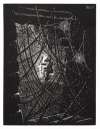Bernard
Buffet
Bernard Buffet, renowned for his expressive, angular imagery, is a cornerstone of post-war French art. His evocative works, often sombre and brooding, are highly sought after by collectors and investors. If you’re seeking Bernard Buffet original prints and editions for sale or wish to sell, request a complimentary valuation and explore our network's most in-demand pieces.
Notable series
Bernard Buffet art for sale
Discover Bernard Buffet prints for sale, exclusively available through our private network of collectors. Explore signed and unsigned screenprints, lithographs, digital prints, and rare editioned proof prints by era-defining blue chip artists.
Sell Your Art
with Us
with Us
Join Our Network of Collectors. Buy, Sell and Track Demand
Biography
Born in Paris on July 10, 1928, Buffet's propensity for art was evident from his early years. He studied at the École Nationale Supérieure des Beaux-Arts, where he honed his distinct style that would later define his oeuvre. His talent was promptly recognised when, at the age of 20, he had his first solo exhibition, which was a resounding success and launched his career. Buffet's early acclaim was further cemented when he was awarded the prestigious Prix de la Critique in 1948, sharing the prize with another artist.
Buffet's artistic development unfolded against the backdrop of post-war Europe, where his work seemed to mirror the collective despair and disillusionment of the time. His most notable periods include the Horror of War series, reflecting on the tragedies of conflict, and his Clown series, which delved into the complex interplay of humour and melancholy. Throughout his career, Buffet remained committed to figurative painting, despite the dominance of abstract movements, which set him apart from many of his contemporaries.
His work extended to various themes and subject matters, including religious scenes, landscapes, still lifes, and portraits. Buffet's series depicting the life of Christ in the late 1950s was one of his most profound contributions, offering a stark and riveting interpretation of the traditional biblical narrative. His prolific output also encompassed impressive lithographs and illustrations for books, showcasing his versatility as an artist.
Bernard Buffet's career was marked by numerous exhibitions across the globe, with his works being showcased in leading galleries and institutions. His art was widely collected, and he gained notoriety not only in France but also in Japan, where he enjoyed a particularly fervent following and where the Bernard Buffet Museum was inaugurated in 1973, dedicated exclusively to his works.
Despite facing criticism from some quarters for his unyielding adherence to figurative art, Buffet's legacy is that of a defiant and original voice in the modern art scene. His influence can be seen in the subsequent generations of artists who have been drawn to the emotive power and raw intensity of his work. Bernard Buffet passed away on October 4, 1999, leaving behind a vast and impactful body of work that continues to provoke thought and stir emotion in the viewers, ensuring his place in the pantheon of great 20th-century artists.
































